Fort Sanders and the Battle of Knoxville
Introduction
Text-to-speech Audio
Images
This historic marker directs visitors to the site of the fort
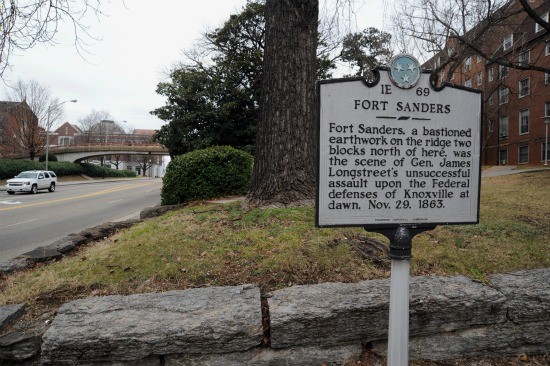
This painting by Greg Harlin depicts the Confederate attack on Fort Sanders
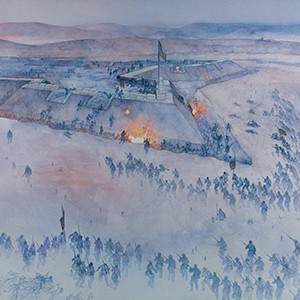
Earl J. Hess, The Knoxville Campaign: Burnside and Longstreet in East Tennessee-click the link below for more information about this book
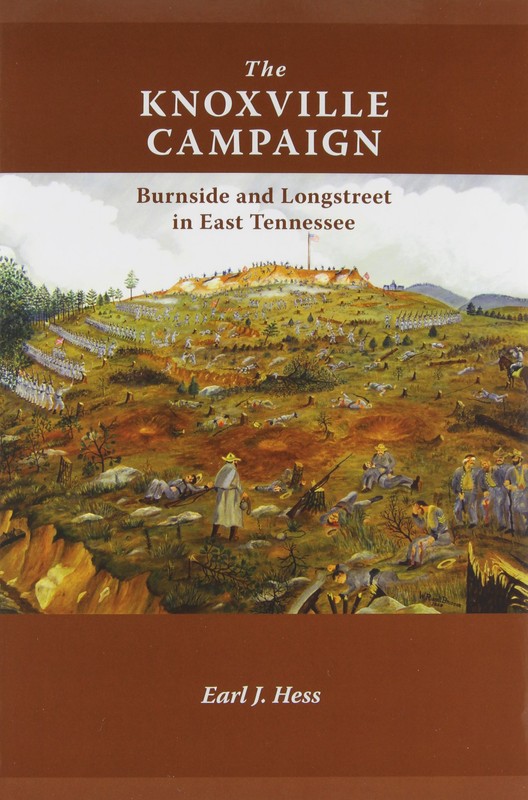
This monument was dedicated to the 79th New York Volunteer Infantry that defended the city at the Battle of Fort Sanders
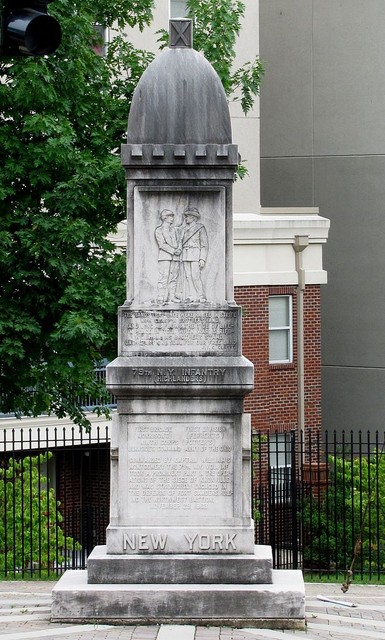
Union and Confederate veterans meet at the site of the Battle of Fort Sanders for a reunion, circa 1880s.
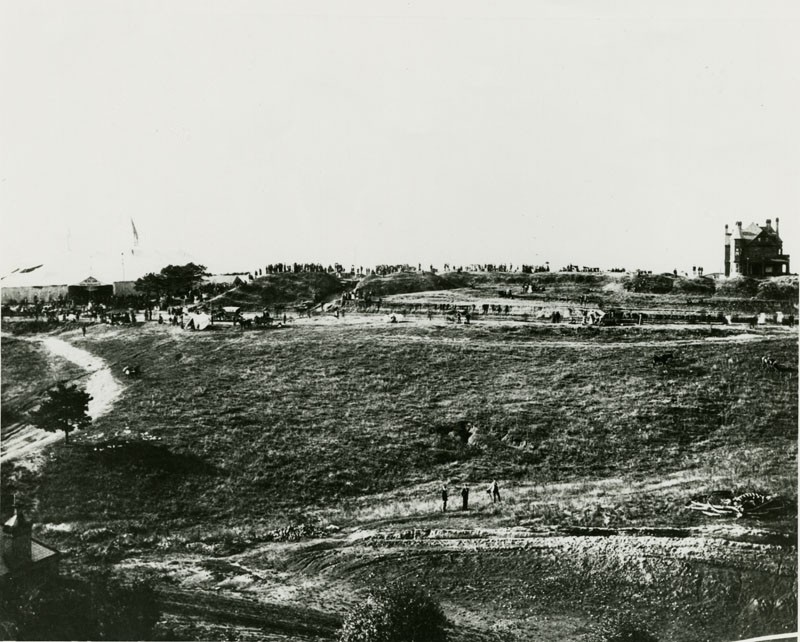
Backstory and Context
Text-to-speech Audio
Although Tennessee voted to secede from the Union, many residents of Eastern Tennessee either hoped to remain neutral in the conflict. In addition, a number of residents supported an attempt to secede from the rest of the state and support the Union. Knoxville was more divided in its sentiment but there was minimal opposition to Union troops who occupied and controlled the city in the early years of the war. In the winter of 1863-1864, Confederate troops attempted to gain control of the region in a series of maneuvers, skirmishes, and battles known as the Knoxville Campaign.
The turning point of the Knoxville Campaign occurred when Union forces defended the city and broke the attempted Confederate siege at the Battle of Knoxville between November 17 and December 4, 1863. During these two weeks, Union defenders and civilians endured two brutal weeks with few supplies and frigid weather. Reports indicate that soldiers were on quarter-rations and draft animals were seen trying to eat one another's tails.
Confederate forces believed that the city was near a breaking point on November 29th, ordering a full assault. In the Battle of Fort Sanders, the Union defenders routed the Confederates, some of whom fell into a large trench that had been built as a trap. In about 20 minutes of intense fighting, the Confederate attackers lost over 800 men while the Union defenders lost only 13.
The Battle of Knoxville continued until December 4th, when Confederate leaders ordered an end to the siege. The Knoxville Campaign ended when Longstreet retreated to Virginia, conceding union control of Eastern Tennessee.
The actual site of the fort became a residential neighborhood in the years after the war. In addition to the markers and monument in this neighborhood, area Civil War reenactors built a replica of Fort Sanders in a pasture in east Knox County. This fort is used for reenactments as well as tours and educational programs. Directions to the McClung Museum, along with hours and more information, can be found on its Clio page: http://theclio.com/web/entry?id=3753
